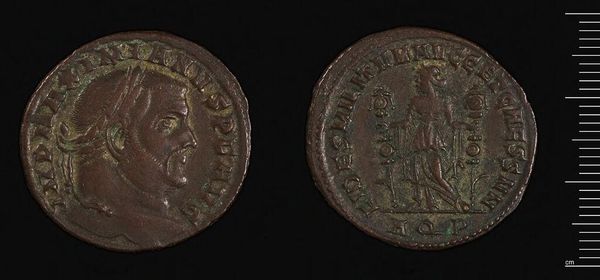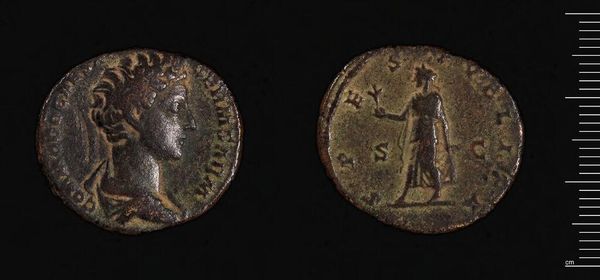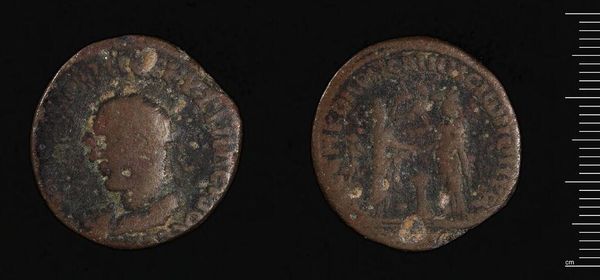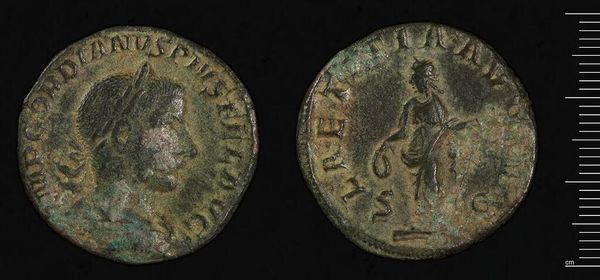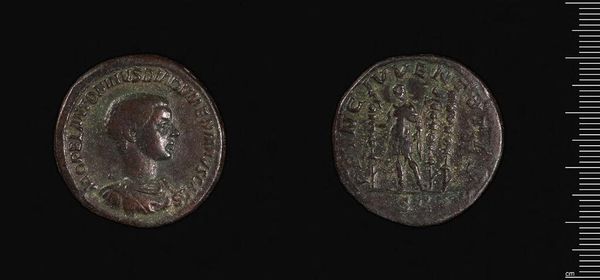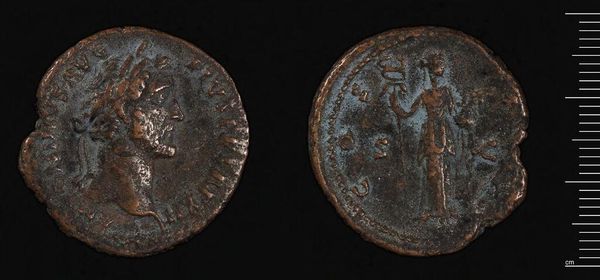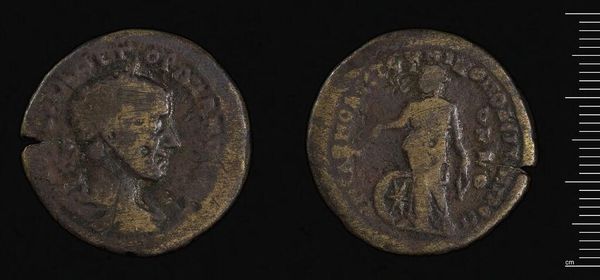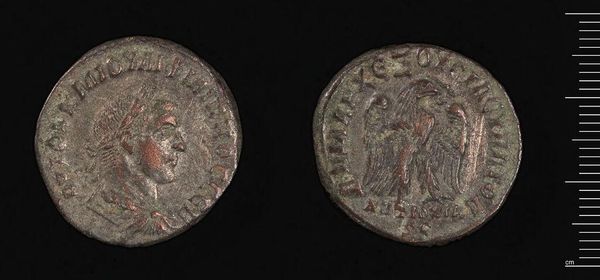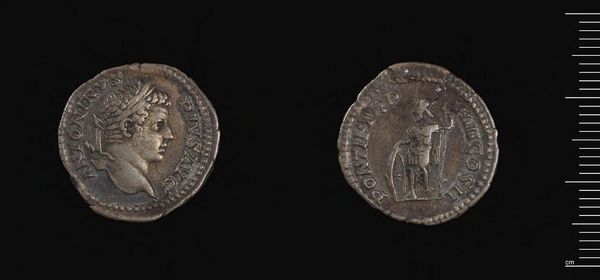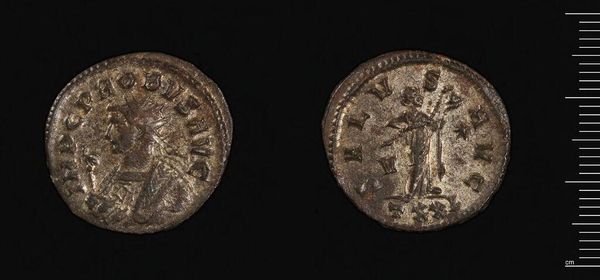
Dimensions: 10.53 g
Copyright: CC0 1.0
Editor: So, this is a Follis of Galerius Caesar, from Alexandria. Looking at its condition, you really get a sense of how it circulated as an object of exchange. What can you tell me about this coin? Curator: The wear and tear are key. Each scratch, each imperfection, represents a moment of human interaction. It’s not just currency; it's a record of labor, trade routes, and the material realities of the Roman Empire. What was its material composition? Editor: It’s made of bronze. Curator: Precisely. Bronze wasn't just a neutral material; it was tied to specific mining locations, trade networks, and metallurgical processes. The coin's value wasn't solely symbolic, it was rooted in the labor and resources required to produce it. Editor: That’s fascinating; I never considered the connection to labor like that before! Curator: By studying these production aspects, we challenge our ideas of what constitutes "art" and “craft”.
Comments
No comments
Be the first to comment and join the conversation on the ultimate creative platform.
